Boost Your Online Performance with These 8 Metrics
Table of contents
On August 14th, Ryanair’s volume of mentions skyrocketed to 2714. This is around three times more than they normally receive in a day.
Is this good news? Unfortunately not, as their sentiment was five times worse than usual. This means a PR crisis occurred.
What caused it? Brand24 has the answer.
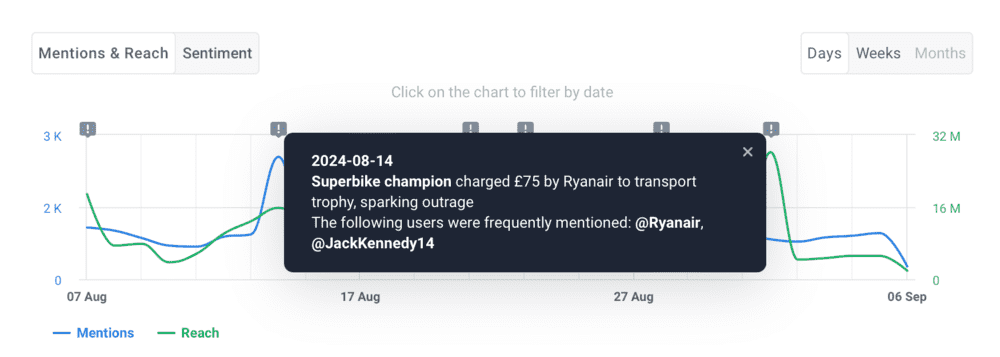
Ryanair’s online performance was ruined by Jack Kennedy’s tweet, who complained about paying £75 for his trophy transportation. The motorcycle racer’s fans immediately responded with their support. They caused a lot of buzz and the sentiment drop.
The internet is a powerful place. That’s why you have to track your online performance.
Online performance for a business refers to how effectively a company operates, engages, and converts its audience in the digital space. It encompasses a variety of metrics, strategies, and tools that measure and optimize the company’s presence and impact on the internet.
As you can imagine, your performance online is crucial. Especially nowadays, when more than 5 billion people have access to the internet!
They compare offerings, read and write reviews, consume content, and purchase products.
That’s why you must ensure your business is well-visible and well-represented online.
What is online performance?
Online performance for a business refers to how effectively a company operates, engages, and converts its audience in the digital space.
It is crucial for businesses because most consumers research and engage with brands online before making purchasing decisions. Strong online performance increases brand visibility, customer engagement, and revenue.
In essence, online performance measures how well a business uses digital channels to attract, engage, and convert customers.
How to measure online performance?
Measuring online performance relies on 8 key metrics. Read further to learn how to measure them effectively.
01 Social media and non-social reach
Non-social and social media reach refer to the amount of people who come across your content online.
Thanks to measuring reach, you will find out:
- If your content is shareable and engaging for your audience
- Your brand awareness level
Social media reach can be easily measured in each platform’s dashboard.
However, if you are interested in non-social reach and a holistic view, you need an external tool to measure that for you.
Brand24 is one of the top options.

Additionally, AI-powered tools like Brand24 analyze your data and detect the most reach-efficient sources.
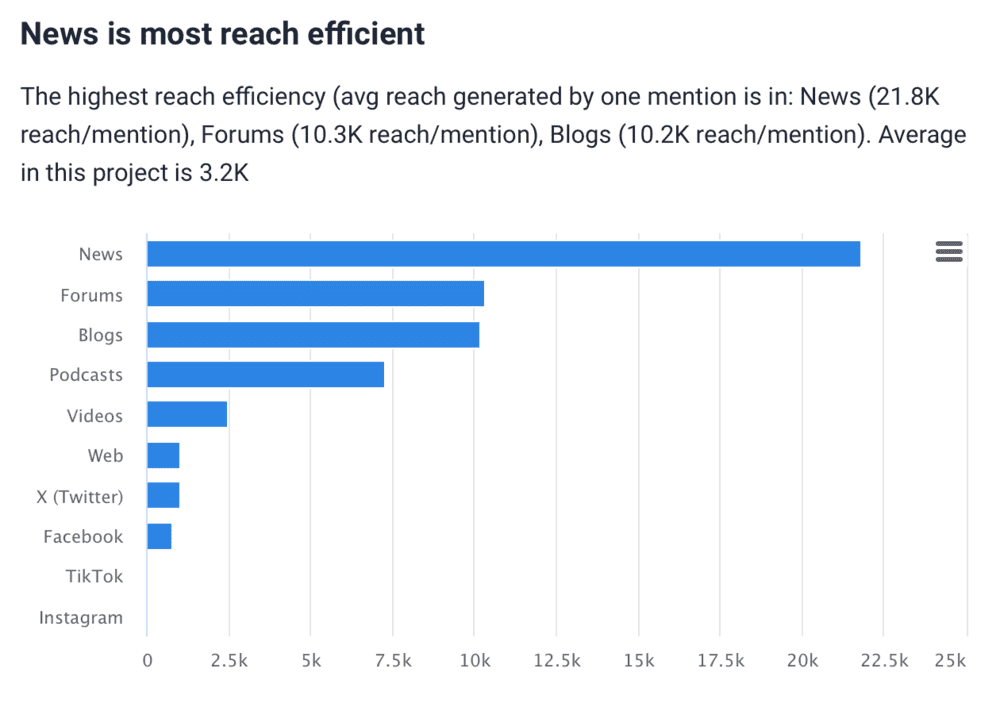
This way, you can easily find quick wins to boost your online visibility.
02 Conversion Rate
The conversion rate indicates the percentage of visitors or users who complete a desired action out of the total number of visitors or users.
The action can be anything like purchasing, signing up for a newsletter, or downloading a resource.
Here’s how to calculate the conversion rate:
- Determine the total number of visitors or users.
- Determine the number of conversions.
- Plug the values into the formula and multiply by 100 to get the percentage.

03 The volume of mentions
Simply put, the volume of mentions represents the amount of online chatter about your brand.
As to the rule, the more mentions you get, the better. However, as you saw in Ryanair’s example, their sentiment also counts.
The simplest way to track this metric is to use media monitoring tools. Brand24 is one of them.
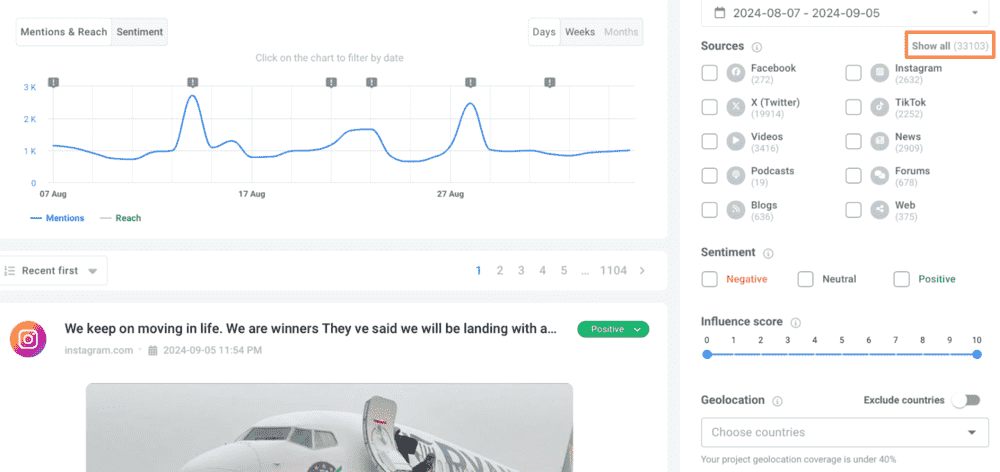
Additionally, Brand24 leverages the power of AI to detect dominant mentions sources.
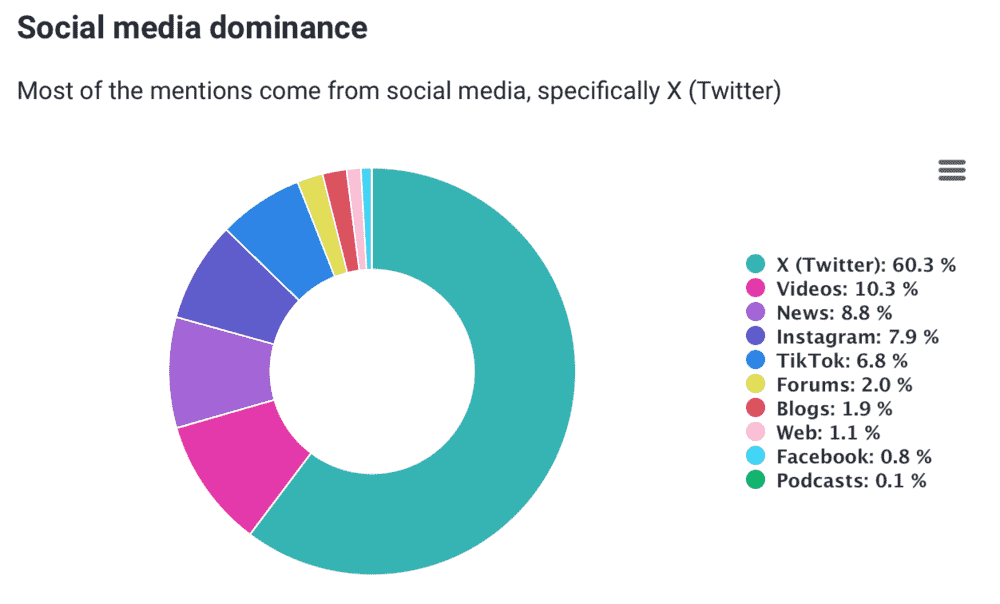
04 Return on Investment (ROI)
Return on Investment (ROI) is a metric used to evaluate an investment’s efficiency. It measures the gain or loss generated relative to the investment’s cost.
Regarding online performance, you can measure the ROI of influencer campaigns, the purchase of specialized tools, social media ads, and any other cost-related action that generates revenue.
Steps to calculate ROI:
- Determine the total return on the investment (this could be the revenue generated or the asset’s final value).
- Subtract the initial investment cost from the total return to find the net profit (or loss).
- Divide the net profit by the cost of investment.
- Multiply by 100 to express the ROI as a percentage.

Where:
- Net Profit (Gain from Investment) = Total Return – Cost of Investment
- Cost of Investment = The initial amount invested.
A positive ROI means the investment gained value, while a negative ROI means it lost value.
ROI does not take into account the investment’s time frame, so consider time-adjusted metrics such as annualized ROI when comparing investments over different periods.
05 Share of Voice
Measuring the Share of Voice will help you determine how much buzz your brand generates online compared to your competitors.
This gives you a clear picture of your position in the market in relation to the rest of the companies in your niche.
To calculate SoV, you could use a complicated formula or a dedicated tool. The latter is, of course, faster and simpler.

Save hours on measuring SoV with Brand24!
06 Presence Score
The Presence Score operates on a scale from 0 to 100, where 100 is achieved by globally recognizable brands.
It is closely related to your performance online – the higher your Presence Score, the better your online performance, as to the rule.
The fastest way to calculate this metric is to use Brand24.

07 Customer Lifetime Value (CLV)
Customer Lifetime Value is a key metric to estimate the total revenue a business can reasonably expect from a customer during the duration of their relationship.
There are various ways to calculate CLV, depending on the desired complexity and level of detail.
Here’s a simple and a more detailed approach:
1. Basic CLV Formula
This formula is suitable for businesses that don’t have complex customer behaviors:

Where
- Average Purchase Value (APV): Total revenue divided by the number of purchases.
- Average Purchase Frequency (APF): Number of purchases divided by the number of customers.
- Customer Lifespan: The average number of years or months a customer stays with the business.
2. Detailed CLV Formula (with Profit Margin)
This method accounts for profit margins and discounting future cash flows, providing a more accurate value.

Where:
- Churn Rate: The rate at which customers stop buying from you, often expressed as a percentage. For example, if 20% of customers stop buying each year, the churn rate is 0.2.
- Profit Margin: Percentage of revenue kept as profit after expenses.
08 Sentiment
Last but not least, there’s the sentiment metric. It is crucial for your online performance evaluation as it indicates if the buzz about your brand is positive or negative.
It’s good if you have lots of mentions, a broad reach, and a high Presence Score, but you still have to ensure those elevated metrics result from positive buzz and not a controversy spreading online.
The best way to conduct a sentiment analysis is to use a professional, dedicated tool. You can rely on Brand24’s experience in this regard.

AI-powered sentiment analysis tools don’t stop here.
Brand24 offers an in-depth emotion detection. It provides more detailed insights into your brand’s online reception.
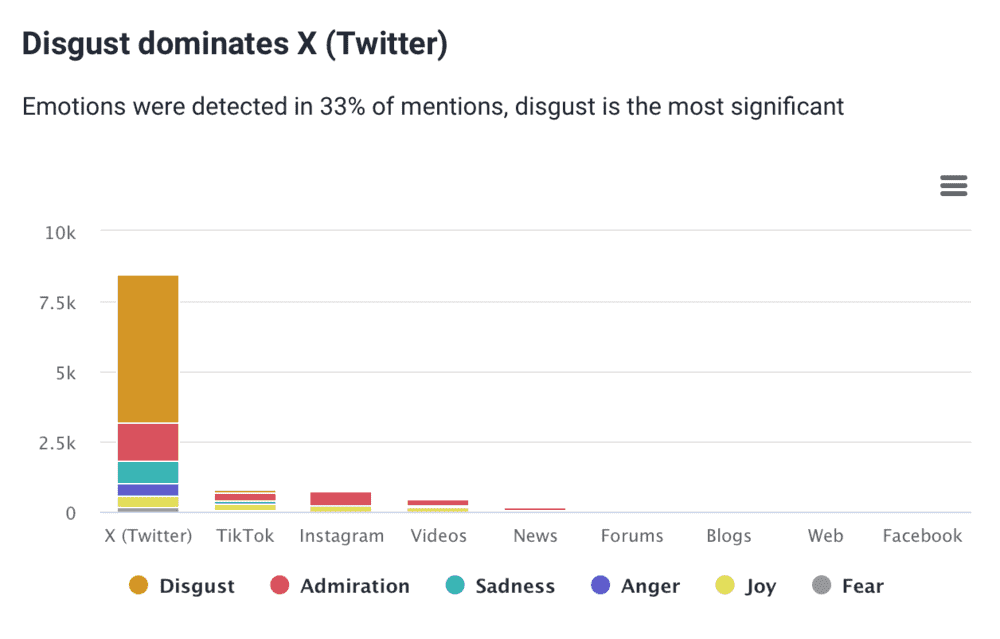
Additionally, Brand24 detects the dominant negativity sources. This allows you to tweak your action and focus on online reputation repair on the particular platform.

Tip: Benchmark the online performance
Benchmarking is the cornerstone of measuring your online performance. A bunch of numbers means nothing if you don’t have the necessary context to interpret them.
There are 2 effective approaches:
- Benchmarking with your competitors helps you understand your position in the market. It points out your strengths and weaknesses compared to other companies in the niche.

- Benchmarking with your past results helps you verify if your performance improves, deteriorates, or remains unchanged over time.
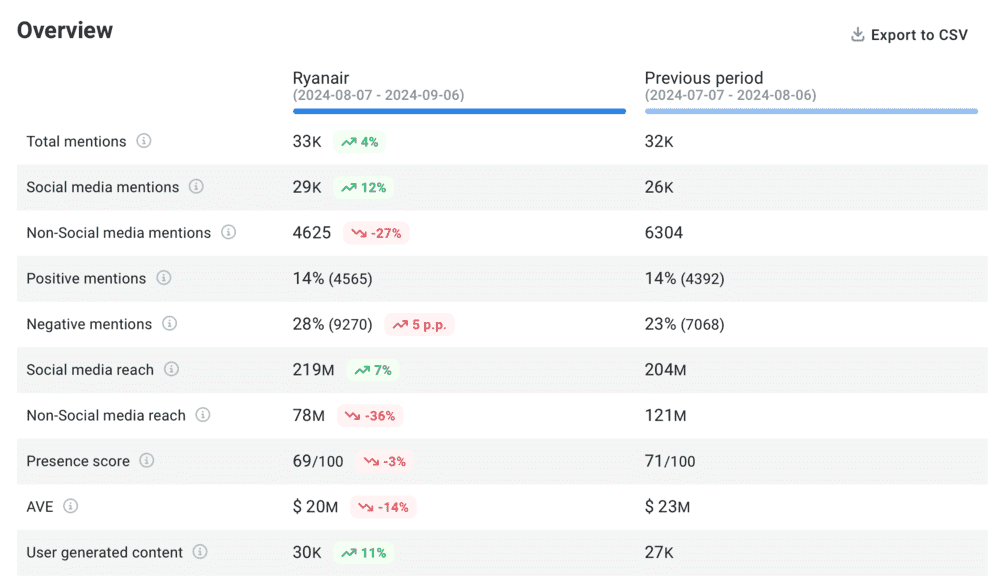
Conclusion
Measuring online performance is the cornerstone of your marketing work.
Let’s be honest. The internet is a gold mine of clients. That’s why you need to take good care of how your brand is perceived.
But not only that. You also have to ensure a strong brand visibility so as not to disappear in a thicket of competitors’ offerings and spammy ads.
All that can be done with dedicated performance monitoring tools. One of them is Brand24.
You can rely on our 13 years of expertise.
Final thoughts:
- Performance on the internet is crucial nowadays. Clients verify brands online, review them, and read ratings. Because of this, you need to take good care of your brand reputation.
- Measuring online performance is a complex and tedious task. Specialized media monitoring tools like Brand24 streamline this process. Thanks to AI software, Brand24 is capable of completing multiple tasks that would otherwise need to be done by a human. This saves time and minimizes mistake risk.
- Remember the 8 key online performance metrics: reach, conversion rate, mentions volume, ROI, share of voice, Presence Score, CLV, and sentiment.
- Benchmark your performance against competitors to assess your market position and against your past results to evaluate your development pace.

